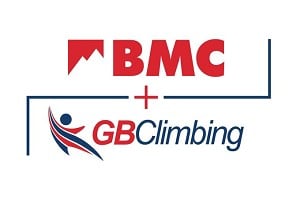
The BMC's Annual General Meeting will take place on June 16th in Kendal, where proposed constitutional changes will be voted on and a new President, Vice President and other key roles elected. We got in touch with the two candidates for BMC President - Lynn Robinson and Les Ainsworth - to find out more about them as people, climbers and potential BMC Presidents...
But first - an outline of the two approaches to be voted on at the AGM, which Lynn and Les discuss in the interviews. The proposals are further described in this BMC article. Full PDFs outlining these proposals can be found within the article.
AGM proposal A – as recommended by the BMC National Council
Key points:
- Would put in place a high level of governance in the BMC which better defines roles of National Council and the Board of Directors, ensuring clear lines of accountability and decision making, and much improved organisational transparency.
- Would ensure continued government recognition of the BMC's status as the umbrella body for mountaineering, and continued eligibility for Sports Council funding for the BMC and its partners.
- Requires members to accept the need for modernisation and change and for the Board of Directors to have greater operational responsibility than is currently the case.
AGM proposal B – as recommended by J.Booth and supporters
Key points:
- Simple and makes minimal changes to the current constitution, so the BMC would continue to operate much as it does today.
- Members would have a similar degree of control over the BMC (via National Council) as they do today.
- Would require less organisational change but would create uncertainties over the availability of Sport England grant funding for the BMC and partner organisations.
BMC AGM - Castle Green Hotel in Kendal at 1.00pm on Saturday 16th June. More info here.
BMC President Candidates
Lynn Robinson
I've been incredibly lucky to have wide-ranging and extensive walking, climbing and mountaineering experiences that have greatly enhanced my life. From hill-walking I started scrambling. I began to love the exposure and challenge of harder scrambles, so thought it best to 'learn the ropes' – quite literally. I joined my local university mountaineering club, climbing my first routes outdoors at Froggatt in Derbyshire in the late 1980s and bouldering outside from soon after. Since then I've climbed, walked and mountaineered around the world including Asia, Africa, Europe, North and South America. Highlights include trad rock new routeing and exploration in Sinai, big walling in Yosemite and completing both the Cuillin Ridge traverse and Lake District four 3,000 foot peaks in under 24-hours.
Give us a few words on your involvement with the BMC to date.
I have been a BMC volunteer for over twenty years, first working with the BMC when I became President of my local affiliated university mountaineering club, progressing to my current position as BMC Vice President. In 2017, I received the BMC George Band Award for Outstanding Voluntary Contribution to Mountaineering, something that I'm incredibly proud of.
I am the executive lead for volunteering, and have started to develop a volunteering strategy. Also, with the support of the National Council I introduced a new Awards and Recognition Scheme for BMC volunteers. As a long standing volunteer with the BMC, I am passionate about making sure that volunteers have the support and recognition they deserve.
I am also a BMC guidebook committee member and was involved in the new series of BMC guidebooks, co-editing the Froggatt to Black Rocks guide. I am also involved in the Wired guides project. I co-chair the Women's Development Group. I was the secretary for the Peak Area (for over 5 years).
Give us a few words about your manifesto.
I really welcome the proposed split in role of President and Chair of the Board of Directors. I am very clear that, as President and chair of the National Council, I will do my very best to ensure it represents the democratic position of all members of the BMC. I will be an active champion for members, including scrutinising the Board's decision on members' behalf.
A big thing for me is recognising that different members need different things from their BMC membership. I will create a membership strategy that recognises everyone we represent. I will continue to encourage and support all BMC volunteers by developing a volunteering strategy.
It's become clear to me that there needs to be improved communication between members, staff, Board members and volunteers. I will do this by developing a comprehensive communication strategy that works better for everyone and reviewing how we use social media and digital communications.
BMC specifics
How would you describe the current state of the BMC?
I would say that the vast majority of the BMC membership would just be thinking 'business as usual'. This is down to the hard work, commitment and professionalism of the office staff and many hundreds of volunteers. Addicts of UKC debate on the subject might think otherwise and it definitely feels to me that the BMC is at a critical crossroads.
Since the Motion of No Confidence that was put forward (and fortunately lost) at the April 2017 AGM I think it's fair to say that the BMC has been through a turbulent time. Being a Vice President and a member of both the Executive Committee and National Council during this time, I have insight and knowledge of how this has had a direct negative impact on the day to day running of the BMC. Sport England funding has been lost for incredibly important roles, and some staff have left. Many key staff and volunteers have felt under significant pressure, which has detracted from their good work.
I think the Open Forum that took place on 15th May was pivotal in deciding the future of the BMC. Members from both sides of the debate put aside their differences and worked incredibly hard to produce a viable compromise. This has improved the democratic BMC proposed Articles (Proposal A) and made an excellent foundation for working relationships.
I'm a 'glass half full' person, but I'm not naïve. I know that there is lot of hard work ahead, but I'm up for that challenge. With members' support I truly believe there is a bright future for the BMC – I wouldn't be standing for President otherwise.
Which of the two sets of proposals will you be supporting?
Proposal A. This is the democratically developed and decided proposal of the BMC to be put to the AGM for full membership agreement.
Since the Organisational Review Group (ORG) was formed following the April 2017 AGM, they have worked tirelessly to consult with members and other stakeholders to conclude with the recommendations that they outlined. The ORG has listened to feedback and amended as necessary. Subsequently, the Implementation Group proposed how we might put the recommendations into practice and have compromised sensibly to achieve this. The final recommendations (Proposal A) are a clear result of democracy in action, and for me it is the only sensible choice.
How can the BMC broaden its reach to younger members? With an influx of young people and university students especially taking part in outdoor activities, how can the BMC attract them to join and perhaps become more involved in the organisation itself?
Most indoor climbing centres now run kids' clubs, which I think are a great idea. I fully support the National Indoor Climbing Award Scheme (NICAS) which young people can join when they're 7 years old. Also, there are some great courses for supporting young people to venture into the outdoors. These are all incredibly important when young people start their 'climbing pathway' as they are the future members and volunteers of the BMC.
I first 'discovered' the BMC through my university mountaineering club and I remember going to BMC safety seminars and winter climbing safety lectures. As club President the BMC really helped me fend off some ridiculous suggested 'safety' changes from our Student Union.
I think reviewing the current membership packages could help. If the membership options can change to be more appropriate for different people, then that might attract a new audience. At the moment I think the family membership is a great offer, and hopefully as people leave home, young people may consider joining individually and we might be able to help a little in that transition.
The use of social media is a great way to communicate to the wider membership, especially younger members. People can follow me on Twitter and Instagram ( @bmc_lynn ). I will be continuing to use these to assist in my communication.
We need to continue to ensure there is a good spread of articles in Summit magazine and the BMC handbook so that all members have something inspiring to read. This year I have introduced the BMC Young Volunteer of the Year for any person under the age of 25 who has volunteered extensively. I obviously can't give anything away at the moment – but please read about this award after the June AGM.
How can the BMC encourage more female participation in the BMC as an organisation and at events?
This is something I've been thinking about the whole time that I've been volunteering. Things have a changed a lot from when I started, when women were very much in the minority. As I've said previously, I think role models are really important - and what amazing female role models we have now in this country! The Women's Development Group, which I co-chair, was formed for this reason. Increasing female participation in the work of the BMC at both local and national level is one of the group's aims.
Positive steps have been made in the BMC, for example: female membership is up to 27%; in 2017 Gwen Moffat and Angela Soper were the first women to be awarded honorary membership of the BMC in recognition of their contributions to mountaineering and climbing; we have 2 female Vice Presidents; a new female Independent Director (subject to AGM ratification); and possibly soon the first female President?!!
A ten-step guide has been produced by the BMC Equity Steering Group, of how to increase female participation at Area Meetings. Hopefully Chairs and Secretaries have taken this on board. The BMC needs to improve how it measures involvement by women – or how will we know if things improve?
The BMC fully supports the 'This Girl Can' campaign and is also a supporter of the Women in Adventure Film Festival, Women's Climbing Symposium and Women's Trad Fest, which are all incredibly important in encouraging women into climbing and mountaineering. Again the media that the BMC produces has a role to play, and I am constantly scrutinising and giving feedback to ensure it is representative of the membership.
It is an aspiration that the Board of Directors and National Council should be made up of 30% women – personally I think it should be bit higher, but I'll live with 30% as a start. So now is as good a time as any for women out there who want to get involved in the work of the BMC to do so.
Participation figures in indoor climbing are increasing. How can the BMC serve this growing membership sector?
A lot of people I climb with indoors only ever climb indoors, and most of these have only heard of the BMC through me. I would want to review the BMC membership package to see if there's any improvement that can be provided, relevant to them. Being a member helps the BMC in its good work, which includes support for walls, and competitions in partnership with the ABC and 3rd party insurance (I've witnessed quite a few accidents and near misses indoors, especially bouldering, so this is relevant to people who only climb indoors). Many indoor climbers have no intention of climbing outside, but for those that do want to, I would hope the BMC would be able to continue support them to do so safely and without access or conservation problems.
Typically some areas see more volunteer engagement than others, the Peak area for example. How can the BMC encourage members outside of the Sheffield/Manchester 'hub' to become more involved?
If I only knew the answer to that question! Seriously, when I was Peak Area secretary, Neil Foster (Chair at the time) and I, worked really hard to increase attendance to an average of over 70, but it wasn't easy! 3 years beforehand, we had sat in an isolated Peak pub with only a dozen others. We just built on the good work the Area team did the year before us. Certainly the agenda has got to be relevant and important to members, and the suitable length of discussions and breadth of contributions is always a tricky balance.
I instigated the Facebook page, which now has over 1,650 followers; we looked at the structure of the meetings, and a newsletter was started which includes all the detailed access issues in advance. I ensured there were speakers at each meeting with a fair number of women and we improved the relevant content for hillwalking members. Oh…and good chips and sarnies always helped! However, local area meetings are not the only way in which people can get involved in the BMC. As already mentioned, I will develop the Volunteering Strategy to help facilitate involvement.
There are access issues throughout the country that are being dealt with by volunteers; BMC guidebook work; BMC land management; BMC-run competitions and training/education. There is a huge amount of good work being done in BMC affiliated clubs. Being on the National Council and the Exec I get to hear about all the phenomenal work that is going on around the country – we really need to learn to communicate this better.
There was some interest in the livestream of the Open Forum - perhaps something to think of for future debates?
I really welcome this. I would want to embrace the latest technology that is available to ensure engagement and participation from as many BMC members as possible. The BMC is an organisation with over 85,000 members. I was at the Open Forum, and what I particularly liked was that people emailed questions in, which were then answered by the panel.
I also welcome the use of electronic voting this year, to improve engagement with members who can't make key meetings when we decide on the future of the BMC. I do value the debate at the AGM and we need to be careful not to lose that strength. I would urge all members to engage and vote, via whatever format they choose.
Les Ainsworth
I've been rock climbing all over the UK, but guidebook work with a diminished team has meant that for the past few years there has been a strong emphasis on the Lancashire quarries, alhough I try to get two or three visits each summer to the Dolomites and sometimes to Switzerland. The granite in the Grimsel and Bregaglia is wonderful to climb on, although it usually takes me a couple of days to really understand the friction. I now know the Dolomites very well and although the rock is not as good as the Swiss granite, it is just a great place to be.
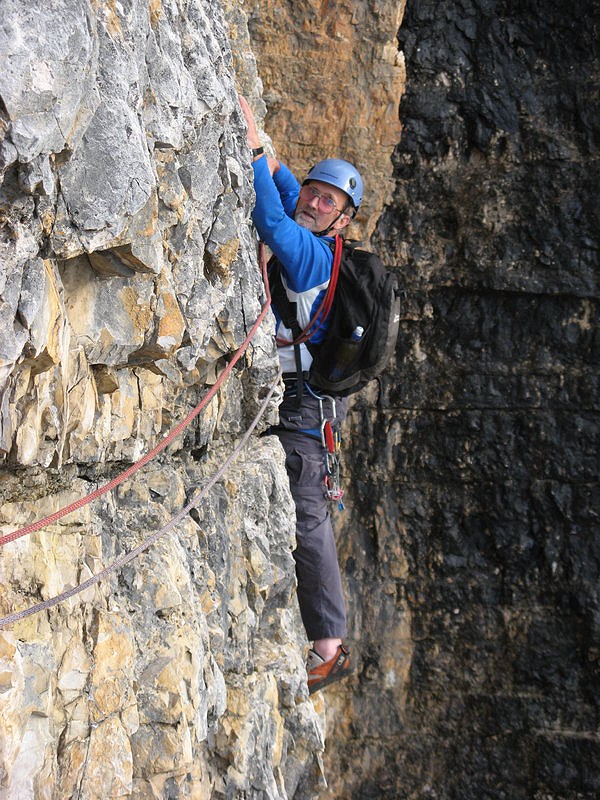
Give us few words on your involvement with the BMC to date.
I first became involved with the BMC in 1966 when I proposed that Lancashire should be an outlying guide in the Peak series. Since then I have been involved in most of the Lancashire guidebooks and for over 25 years I been the North West's Access Rep, so I love the BMC and was very disappointed when other climbers claimed that I am anti-BMC just because I disagree with their views on the organisation.
Give us a few words on your manifesto.
I have become very concerned about the way that the organisational changes have been handled. The National Council appears to me to have been too ready to acquiesce to Sport England's concerns so that the membership has become polarised between two extreme views. Thus, my main concern is to unify the membership, whatever the outcome of the ORG vote – there are good climbers, good friends, with passionate views on either side of the argument and I do not want to lose any of them. So the main thrust of my presidency would involve keeping all members together. This means that the detailed implementation of the agreed Articles must be done in a way that involves all the members in a more positive manner. The process so far has been too controlled from the centre, rather than being the open exchange that it should have been.
The next stage of any implementation should be less contentious and I would like it to be a model example of how we can discuss these issues calmly and without undue pressure. That will require some changes in the style of approach and the adequacy of the information provided.
I am also anxious to improve the flow of information both between the Exec and the National Council and between the National Council and members. There are several changes that I would like to see which whilst small in themselves, could together provide more confidence that members have a real voice.
BMC specifics
How would you describe the current state of the BMC?
My experience of being co-opted on the NC Implementation Group for The National Council and the Executive showed me that we have some conscientious and dedicated people, but the lines of communication are poor. This is typified by the renaming/rebranding situation, where the National Council should have not have proceeded past the initial independent report without taking the issue to the members. In hindsight, this was a costly mistake - particularly in terms of the National Council's credibility.
Which of the two sets of proposals will you be supporting?
My views have always been fairly divided between the two sides of the argument, with the feeling that there were some good points on each side. Before the Manchester Forum I was going to vote for the Tier I Articles. However, I felt that whilst the amendments thrashed out by Andy Syme and Jonathan White were not perfect, when taken with other safeguards that were proposed, these amended Articles were a good and perhaps overdue step in re-unifying our members. So I will be supporting the amended Proposal A.
How can the BMC broaden its reach to younger members? With an influx of young people and university students especially taking part in outdoor activities, how can the BMC attract them to join and perhaps become more involved in the organisation itself?
The BMC must develop a membership offer that attracts younger climbers, which will give them tangible benefits. These should place much emphasis upon the fact that younger climbers have much to learn about the sport and want to move up the learning curve. This is especially true for people whose climbing has started at University. One potential way to support climbers in universities would be to establish relationships with local clubs. For instance, students might be permitted to come to some club meetings under a different level of membership, so that they could develop relationships with climbers from these clubs, leading to full club membership.
As regards the issue of how the BMC can promote younger climbers to be involved at an organisational level, I feel that this should be something that evolves as people become more interested in their sport and not something that requires positive action. I got interested in the BMC when I was in the sixth form because I loved climbing, not because there was pressure for engagement.
Participation figures in indoor climbing are increasing. How can the BMC serve this growing membership sector?
Indoor climbing is certainly becoming an important route into other climbing activities and we must ensure that many indoor climbers will be tomorrow's BMC members. I would like to see a national scheme supported by climbing walls and the BMC which would make it easier for BMC members to visit other climbing walls. For instance, BMC members could avoid retaking competency tests if they have been approved at one wall, or discounts could be offered at other walls to BMC members. I would also like to see a BMC notice area at walls, perhaps with links to local clubs.
Whilst I accept that there are many indoor climbers who will be content to restrict their climbing to indoors, I feel that the BMC could improve the way that indoor climbers are helped to move onto natural rock. There are lots of ways that this could be achieved and we must put more effort into supporting training in all aspects of transitioning to outdoor climbing, with particular emphasis on protection placement. However, in doing this we must also not forget that whilst many indoor climbers do not wish to venture onto natural rock, that walking on our fells and high places is also a very rewarding activity.
How can the BMC encourage more female participation in organisation and events?
When I started climbing female rock climbers were certainly a rarity, but I am pleased that there are now several women climbing both as mixed and same sex pairs. This is already changing the demographic at an organisational level, but there are still more men at the NC/Exec level of the BMC. Personally, I want to see the best people, regardless of their gender or ethnicity etc. and I do not like the idea of restricting applications for some positions in order to achieve a particular gender or racial balance. Women are certainly capable and I feel that it is important for their own self esteem for them to know that they have been chosen on merit, rather than to meet a quota.
That leaves the question of removing things which are perceived by women as obstacles to their participation and I certainly support moves to do this. However, to get back to the question, I agree that more female participation is needed to better represent their interests because there are important differences between the sexes. I am hoping that the BMC's Equity Steering Group will make some concrete proposals that I would be keen to support. The current Chair of that group has a specialist interest in the area, which suggests that their proposals will be well thought-out and evidence backed.
Typically some areas see more volunteer engagement than others, the Peak area for example. How can the BMC encourage members outside of the Sheffield/Manchester 'hub' to become more involved? There was some interest in the livestream of the Open Forum - perhaps something to think of for future debates?
The BMC depends heavily upon volunteers for many things and at different levels. At a grassroots level it is perhaps appropriate to consider two activities, namely participation in the decision-making process at Area meetings and participation in outside activities. Certainly the Peak Area meetings are well attended and I am sure that other areas can learn something from their meetings, which appear to be an appropriate mixture of information exchange both to and from the National Council representatives and then a second part which involves another activity such as a slide show or a quiz. I was particularly impressed by the Peak Area newsletter, which was well written and presented with a variety of interesting articles. In the North West we produced an online newsletter and I felt that the printed one was much better.
Regarding livestreaming, my impression is that a bit more work is needed before this can become an effective tool, but it is probably worth persevering with. Outdoor activities such as clean-ups or barbecues can also work very well, and can provide a great way to meet up.
- ARTICLE: International Mountain Day 2023 - Mountains & Climate Science at COP28 11 Dec, 2023
- ARTICLE: Dàna - Scotland's Wild Places: Scottish Climbing on the BBC 10 Nov, 2023
- INTERVIEW: BMC CEO Paul Davies on GB Climbing 24 Aug, 2023
- ARTICLE: Spectacular Sights at Great Height - Visual Phenomena in the Mountains 27 Mar, 2023
- ARTICLE: Using OpenAI to Create Climbing Content and Images 27 Dec, 2022
- ARTICLE: COP27 and the Cryosphere - No Mountaintop Miracles 11 Dec, 2022
- ARTICLE: Coronation Coincidence: Everest 1953 and Queen Elizabeth II 13 Oct, 2022
- ARTICLE: Meet Ralph, the First Canine Compleatist of the Grahams 4 Aug, 2022
- ARTICLE: Climbers and Guides Adapt to Changing Climate and Landscape in the Alps 28 Jul, 2022
- ARTICLE: Earth Day 2022: Climate Change and Mountains - The Latest Science 22 Apr, 2022



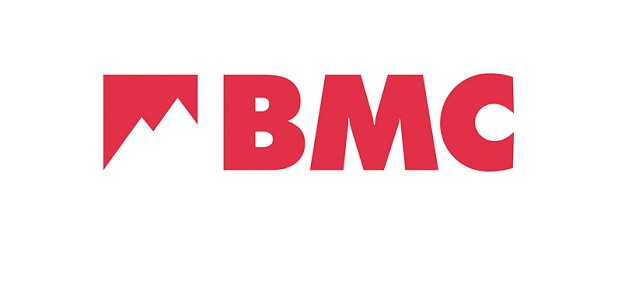
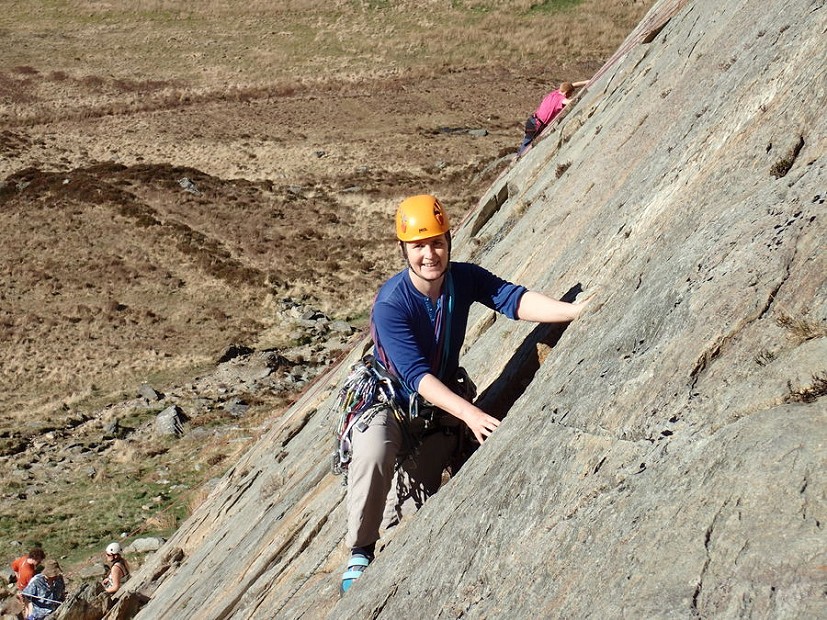
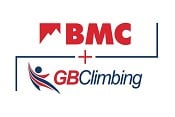
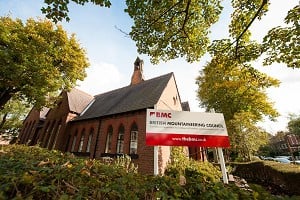
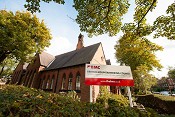
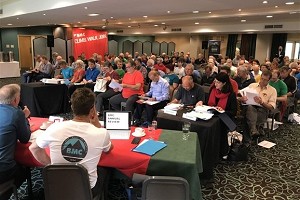
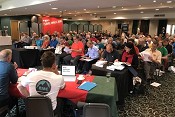




Comments
"When I started climbing female rock climbers were certainly a rarity, but I am pleased that there are now several women climbing both as mixed and same sex pairs."
;-)
Yes, well. Let's just say I've voted for lynn Robinson
Well, I guess that it takes a certain type to sit on a committee.
I abstained on this section, because following the other votes, the BMC requires an experienced leader preferably with experience managing change. This should have been the foremost criteria when choosing candidates for pres.
Welcome to the 70s.